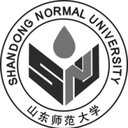Tumor-selective, futile redox cycle-induced bystander effects elicited by NQO1 bioactivatable radiosensitizing drugs in triple-negative breast cancers.
Słowa kluczowe
Abstrakcyjny
OBJECTIVE
β-Lapachone (β-lap), a novel radiosensitizer with potent antitumor efficacy alone, selectively kills solid cancers that over-express
UNASSIGNED
quinone oxidoreductase 1 (NQO1). Since breast or other solid cancers have heterogeneous NQO1 expression, therapies that reduce the resistance (e.g., NQO1(low)) of tumor cells will have significant clinical advantages. We tested whether NQO1-proficient (NQO1(+)) cells generated sufficient hydrogen peroxide (H2O2) after β-lap treatment to elicit bystander effects, DNA damage, and cell death in neighboring NQO1(low) cells.
RESULTS
β-Lap showed NQO1-dependent efficacy against two triple-negative breast cancer (TNBC) xenografts. NQO1 expression variations in human breast cancer patient samples were noted, where ~60% cancers over-expressed NQO1, with little or no expression in associated normal tissue. Differential DNA damage and lethality were noted in NQO1(+) versus NQO1-deficient (NQO1(-)) TNBC cells and xenografts after β-lap treatment. β-Lap-treated NQO1(+) cells died by programmed necrosis, whereas co-cultured NQO1(-) TNBC cells exhibited DNA damage and caspase-dependent apoptosis. NQO1 inhibition (dicoumarol) or H2O2 scavenging (catalase [CAT]) blocked all responses. Only NQO1(-) cells neighboring NQO1(+) TNBC cells responded to β-lap in vitro, and bystander effects correlated well with H2O2 diffusion. Bystander effects in NQO1(-) cells in vivo within mixed 50:50 co-cultured xenografts were dramatic and depended on NQO1(+) cells. However, normal human cells in vitro or in vivo did not show bystander effects, due to elevated endogenous CAT levels. Innovation and Conclusions: NQO1-dependent bystander effects elicited by NQO1 bioactivatable drugs (β-lap or deoxynyboquinone [DNQ]) likely contribute to their efficacies, killing NQO1(+) solid cancer cells and eliminating surrounding heterogeneous NQO1(low) cancer cells. Normal cells/tissue are protected by low NQO1:CAT ratios.


